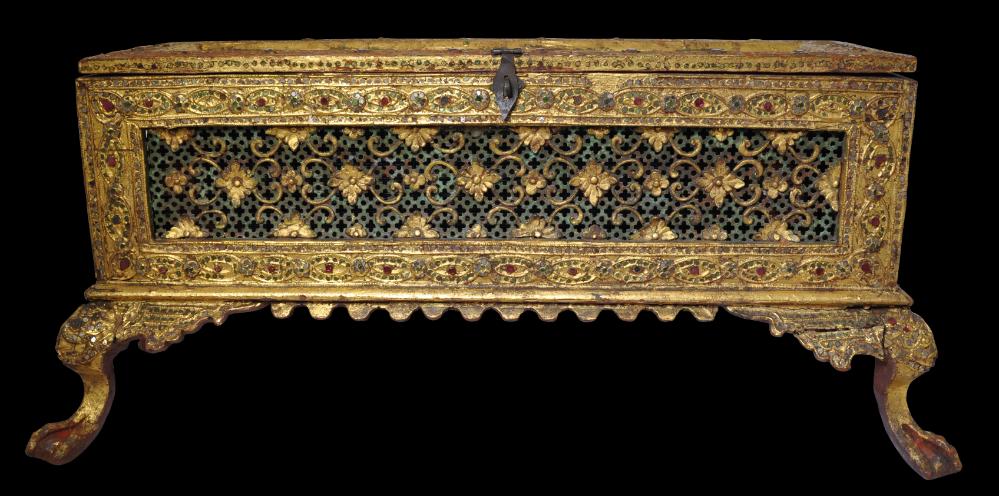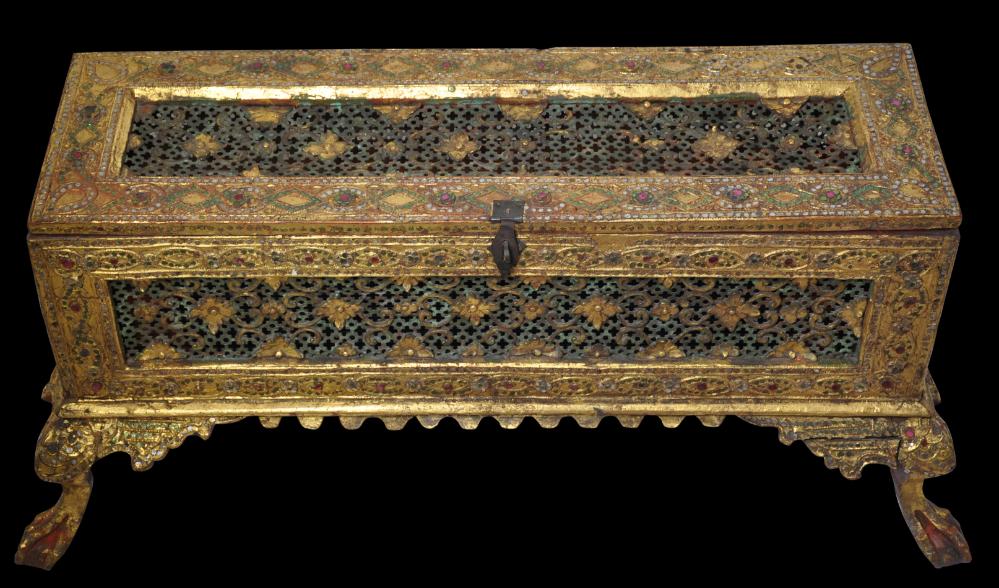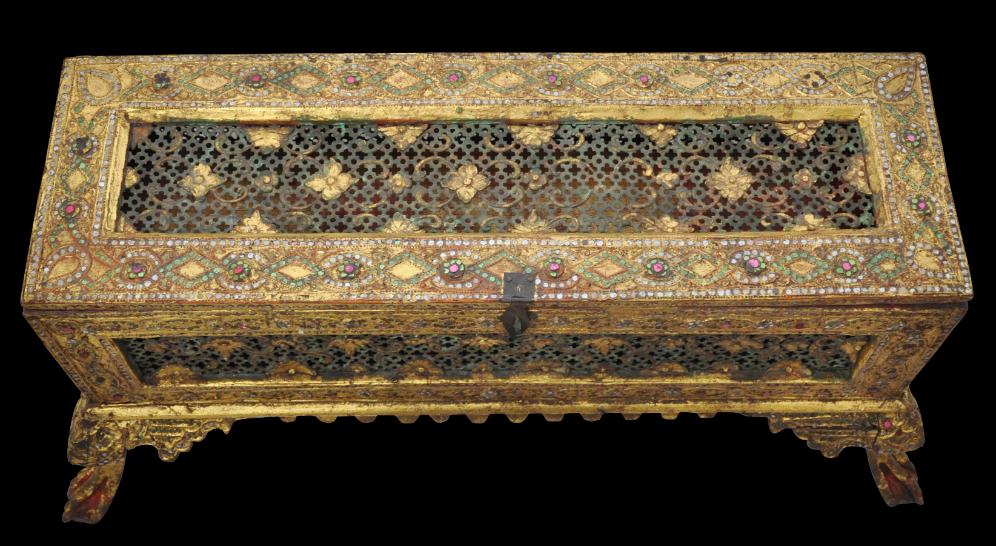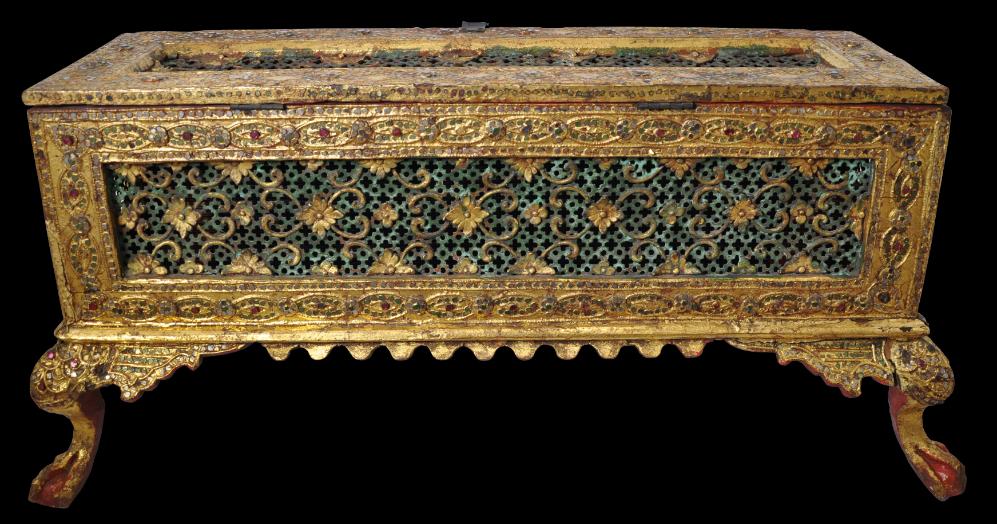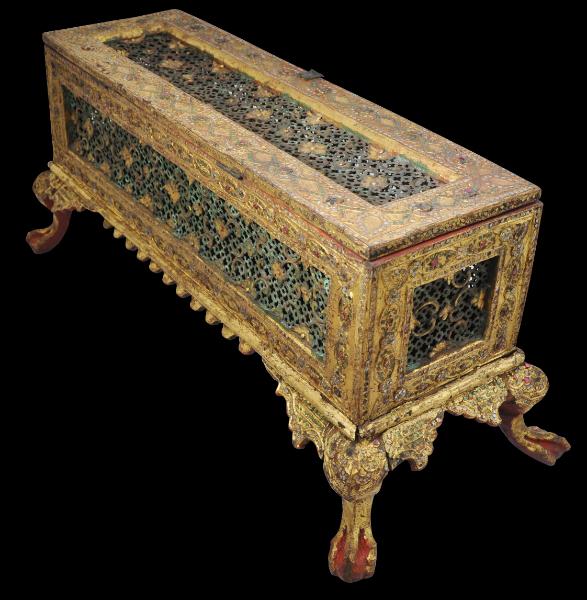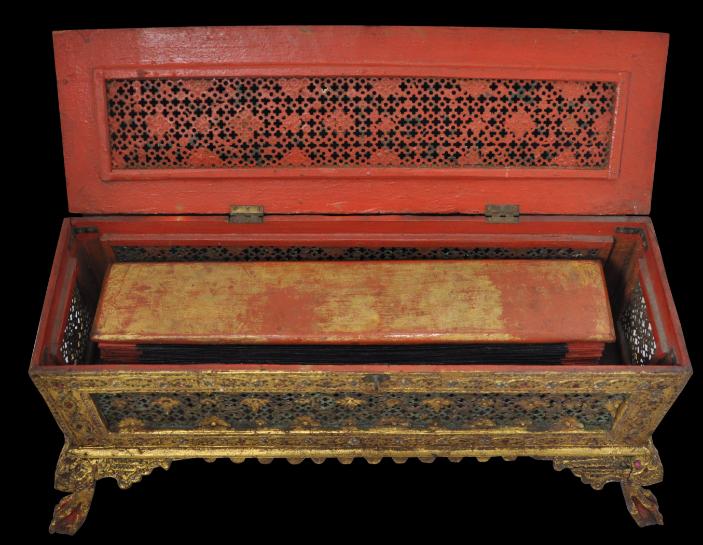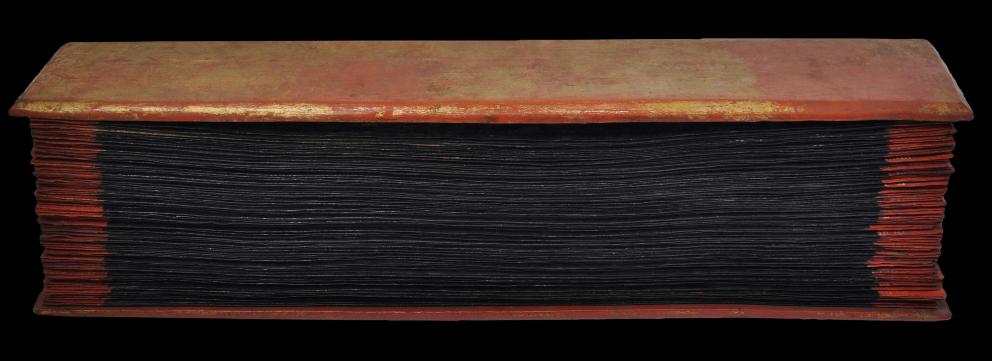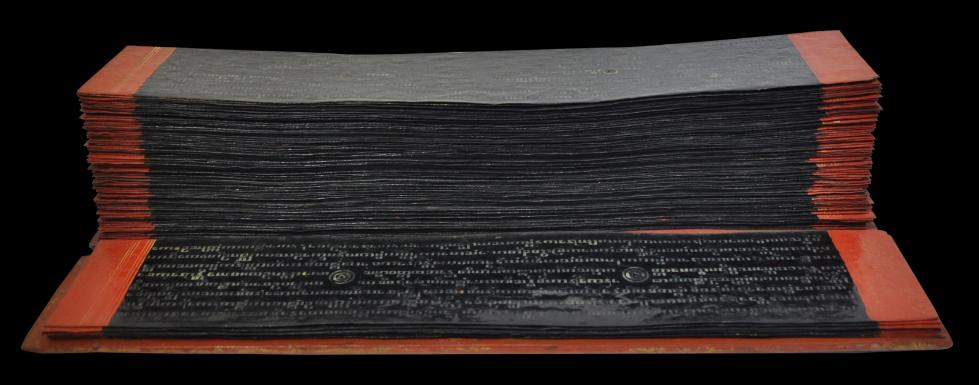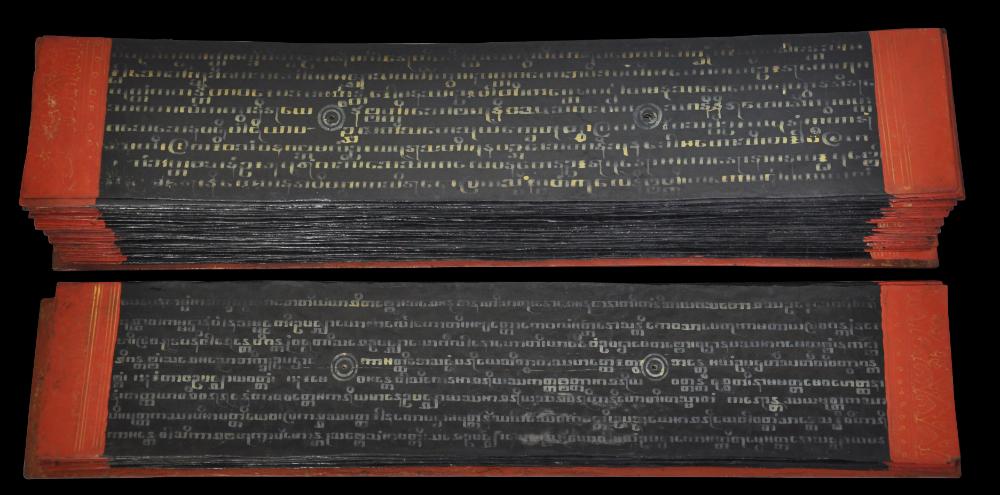
Gilded, Lacquered Manuscript Chest & Large Manuscript, Burma
Gilded, Lacquered Metal & Wood Manuscript Chest (Sadaik) & Large, Rare, 92-page Lacquered Manuscript
Burma
circa 1850
length of chest: 76.6cm, height of chest: 32cm, depth of chest: 31cm
Combined here is a very unusual manuscript chest or sadaik with its original enclosed manuscript, which is equally unusual.
The manuscript comprises 92 lacquered leaves (lacquer on textile) and two wooden covers decorated with red lacquer and gilding. It almost certainly comprises one of the
Parajikas, from the first of the two divisions of the Sutta Vibhanga of the Vinaya Pitaka. These are the elaborate and highly prescriptive Patimokkha rules that monks must abide by. Their elevation through the monkhood is dependent on their ability to memorise these rules.
Each leaf is highly unusual in that it has a solid black background and is filled with eight lines of Pali script in cream and yellow letting. Each end of each leaf is decorated with red lacquer and simple geometric motifs in gilt. We are unaware of any similar examples of such a lacquered manuscript with a black background; certainly none appear to have been published.
The chest, which sits on its original stand, is decorated on all sides, including the lid, with pierced metal work that has been decorated with applied cast metal flowers which have been gilded. We are not aware of any other chest, published or otherwise, with this type of construction and decoration. The metal panels are inset in the wood surrounds. The wood is likely to be teak and is decorated with gilded (gold leaf) molded relief work, a technique known as
thayo, and inlaid with small foil-backed pieces of glass (a process known as hman-zi swei-cha). The foil is silver, red and green.
The interior of the box and underside of the stand are decorated with red lacquer.
The box has a hinged lid, and the stand sits on four elevated zoomorphic, cabriole ‘ball and claw’ feet.
Such chests were used in monasteries to store precious religious manuscripts away from the harm of mice and water.
Sadaiks were commissioned to be donated to monasteries or were used in the households of important officials and the wealthy.
The presence of the stand is important – usually they are lost.
There are minor, age-related losses here and there to the lacquerwork. The latch is crude and possibly a later replacement. Their is some weakness to one of the legs and some cracking to the lacquerwork around the join. There is ample wear to the covers of the manuscript – they seem to have been well used. Overall, the box and stand is highly decorative. It is likely to have been a rare and important commission.
Thank you to Patricia Herbert MBE for assistance in identifying the manuscript.
References
Fraser-Lu, S., ‘Sadaik: Burmese manuscript chests’, in Arts of Asia, May-June 1984.
Fraser-Lu, S.,
Burmese Lacquerware, White Orchid Books, 2000.
Isaacs, R., & T.R. Blurton,
Burma and the Art of Lacquer, River Books, 2000.
Malalasekera, G.P.,
Dictionary of Pali Proper Names, Luzac & Company, 1960.
Than Htun (Dedaye),
Lacquerware Journeys: The Untold Story of Burmese Lacquer, River Books, 2013.
Provenance
acquired from a private collection (estate) in Edinburgh, Scotland; the items almost certainly has been in the UK since colonial times.
Inventory no.: 4051
SOLD

